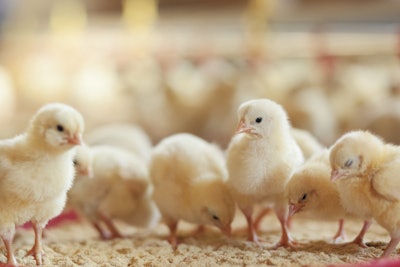
Here, again, is our exclusive listing of the top Latin American poultry companies, both broiler and layer, offering a view of how the industry is developing in the region.
More stable grain costs, and consequently feed costs, have given the region’s industry some respite from the elevated costs of the past couple of years, however the outlook remains complicated in terms of trade and tariffs. Should the U.S. impose tariffs on the region’s producers, we might see a shift in grain and oilseed trade, as well as in poultry exports. Fortunately, the region counts on large grain and oilseed producers, for example, Brazil, Argentina and Paraguay.
The presence of avian influenza (AI) continues to threaten the industry. One of the main impacts has been on the availability of heavy and light breeders, affecting the supply of day-old chicks. Mexico, for example, which has become the leading importer of Brazilian genetics, has been particularly hard hit by AI in breeding stock. A further important point to consider is that, at least in Mexico, not all grandparent and breeding stock are reaching their full productive lifespan.
On a more positive note, many of the region’s countries have finally returned to their pre-pandemic production levels and see a bright outlook for 2025. Among these are Chile and Peru.
A complication in compiling our ranking is that some large companies in the region are becoming more reserved in reporting production numbers, with their annual reports offering much information on sustainability and social responsibility, for example, but less detail on broiler production.
The two Brazilian giants Seara (JBS) and BRF, and the Mexican company Bachoco, are examples of this change. Seara has provided us with a production figure this year, but BRF did not, meaning that we must re-use the production number that the company gave to us two years ago. While Seara recorded a decline in production, we cannot be sure whether the same has occurred with BRF. In the case of Bachoco, the company has revealed details of its broiler production, which rose by only 1 million head, significantly below the 5% annual growth recorded by the Mexican industry as a whole.
Among companies that previously offered highly detailed production data is Cargill Proteina Latin America, with operations in Honduras, Costa Rica, Colombia and Nicaragua. Due to internal changes, the company has requested that we publish the same figure that was included in our ranking last year.
This year sees new companies included in the ranking, including Avícola Kikiriki from Guatemala, which has operations in three countries – El Salvador, Costa Rica and Nicaragua – while some companies have returned to the listing, for example, Ecuador’s Profasa.
The Venezuelan industry is worthy of a special mention for its recovering production. The number of broilers produced by most companies significantly increased over the last year. The industry will become, once again, a significant producer in the region.
Where egg production is concerned, Mexican companies have continued to report a rather low growth rate, but are still expanding. Proan is an example of this trend. The case of Brazil, where growth is much higher, is a different story. With much lower egg consumption than Mexico, the country has the second largest layer flock.
In terms of ownership, the region’s egg industry saw some interesting changes in 2024. JBS acquired a 50% stake in fellow Brazilian company Granja Mantiqueira, the then largest egg producer in South America, making its first incursion into the egg sector. Also in Brazil, Granja Faria, now known as Global Eggs, made a series of acquisitions locally, taking it to the top spot in South America. Global Eggs has also invested abroad, with the purchase of Spain’s Hevo Group. It would be little surprise if, sooner or later, Brazil, in addition to being the largest broiler producer, also becomes the largest egg producer in Latin America.
Broiler top 10
The first five companies in the top 10 broiler ranking comprise four Brazilian companies and one Mexican company. They are JBS (Seara and Pilgrim’s Pride), BRF, Lar Cooperativa Agroindustrial (LAR) and Aurora in Brazil, and Bachoco in Mexico. The Mexican operation of Pilgrim’s Pride is owned by JBS of Brazil.
Lar and Aurora have reported increases of 7.1% and 6.9%, respectively – significant rises, demonstrating how these co-ops are evolving.
According to our figures, these five companies, together, produce almost 4.99 billion broilers across two countries, accounting for 80.67% of all the broilers produced by the top 10 Latin American companies. Those companies in the lower half of the top 10 produce a little over 1.19 billion birds across nine countries
Last year, Grupo San Fernando recorded significant growth of 7.9%, consolidating its position as Peru’s largest poultry producer, while multinational CMI Multi Inversiones reported a small decrease of 0.17%.
Brazil’s Copacol reported a 0.7% decrease compared to 2023, while Chilean Agrosuper reported a 1.9% decrease in production.
Layer top 10
The region’s top 10 egg producing companies had 146.2 million laying hens in production last year, a 4.8% increase compared to the year before, and accounting for approximately a quarter of the total Latin American layer flock.
The list of top 10 companies continues to be dominated by Mexico, home to six of the 10 largest companies. The three Brazilian companies in the ranking, however, continue to climb, with Global Eggs and Grupo Mantiqueira at second and third place, respectively. The remainder of the companies in the top 10 have maintained the same number of hens in production.
With 41 million layers in production – a 2.5% increase year-over-year – Mexico’s Proan continues to be Latin America’s largest egg producer and the second largest egg producer in the world. Mexico’s Bachoco – the only company ranked in both the broiler and layer top 10, held on to fourth position last year with 12.5 million layers in production. While it is believed that Bachoco will increase production this year, the Mexican market may already have reached peak production.
The top three egg producers Proan, Granja Mantiqueira and Global Eggs account for 53.7% of the top 10’s combined layer flock, up from 52.1% last year, with 78.6 million laying hens in production.
The remainder of the top ten egg producers have reported the same number of hens in production as in 2023.
To learn more about the leading poultry and egg companies in Latin America, visit: www.WATTAgNet.com/top-poultry-companies

















